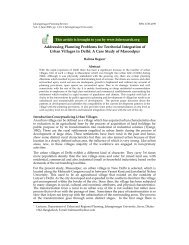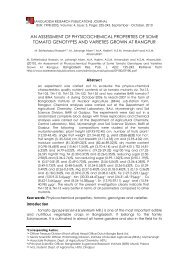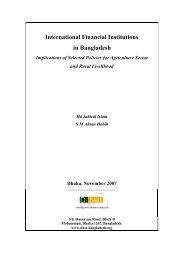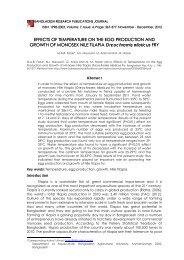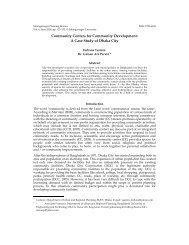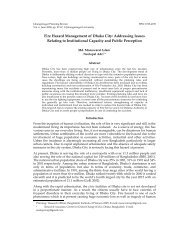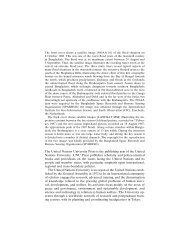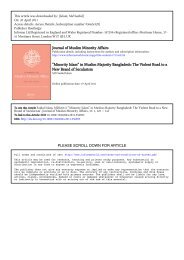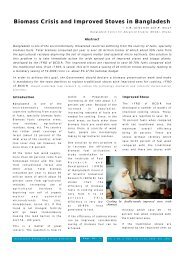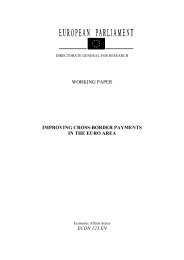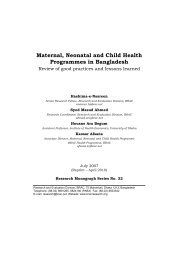Effects of Working Capital Management and Liquidity - Bangladesh ...
Effects of Working Capital Management and Liquidity - Bangladesh ...
Effects of Working Capital Management and Liquidity - Bangladesh ...
You also want an ePaper? Increase the reach of your titles
YUMPU automatically turns print PDFs into web optimized ePapers that Google loves.
Quayyum: <strong>Effects</strong> <strong>of</strong> <strong>Working</strong> <strong>Capital</strong> <strong>Management</strong> <strong>and</strong> <strong>Liquidity</strong> 39As stated by Siddiquee <strong>and</strong> Khan (2009), it has been observed that, firmswhich are better at managing working capital are found to be able to makecounter cyclical moves to build competitive advantage. They are also better atgenerating fund internally <strong>and</strong> also face lesser trouble while seeking externalsources <strong>of</strong> financing.It is also consistent with this study, as this study also found to havesignificant level <strong>of</strong> positive relationship between better management <strong>of</strong> workingcapital <strong>and</strong> high pr<strong>of</strong>itability.3. DATA COLLECTION, VARIABLES AND METHODOLOGYData CollectionFor the purpose <strong>of</strong> this study, secondary data have been collected <strong>and</strong> thedata collected were from listed firms in the Dhaka Stock Exchange. The reasonfor choosing this source is primarily due to the better reliability <strong>of</strong> the financialstatements. Due to time constraint, only cement industry has been selected for thesaid research. The industry consists <strong>of</strong> five companies, due to unavailability <strong>of</strong>one company all years secondary data, four companies were taken as sample; thiscovers 80% <strong>of</strong> the population. The outliers had been adjusted to get betterreliable result. The duration covered in this study was from year 2005 to year2009 for this analysis. Finally the financial statements were obtained from theDhaka Stock Exchange Library.Methodology <strong>and</strong> VariablesAs mentioned earlier this research idea is based on the work done byLazaridis <strong>and</strong> Tryfonidis (2006). The methodology <strong>of</strong> this study is to find out thedependency <strong>of</strong> pr<strong>of</strong>itability ratios over many other working capital components<strong>and</strong> liquidity positions. To cover the liquidity position, few cash position ratioshave been considered along with traditional liquidity ratios. And for the purpose<strong>of</strong> the analysis, regression has been conducted.So the basic model for the study that has been followed is,Pr<strong>of</strong>itability <strong>of</strong> the Firm=f (Quick Ratio , Cash Conversion Cycle ,Receivables Collection Period (RCP), Payable Deferral Period , InventoryTurnover Period , Cash to Current Liability , Cash to Sales )The measure <strong>of</strong> working capital management is cash conversion cycle. And itis described by the following equation:Cash conversion cycle=Receivables collection period + Inventory turnoverperiod –Payable deferral period



